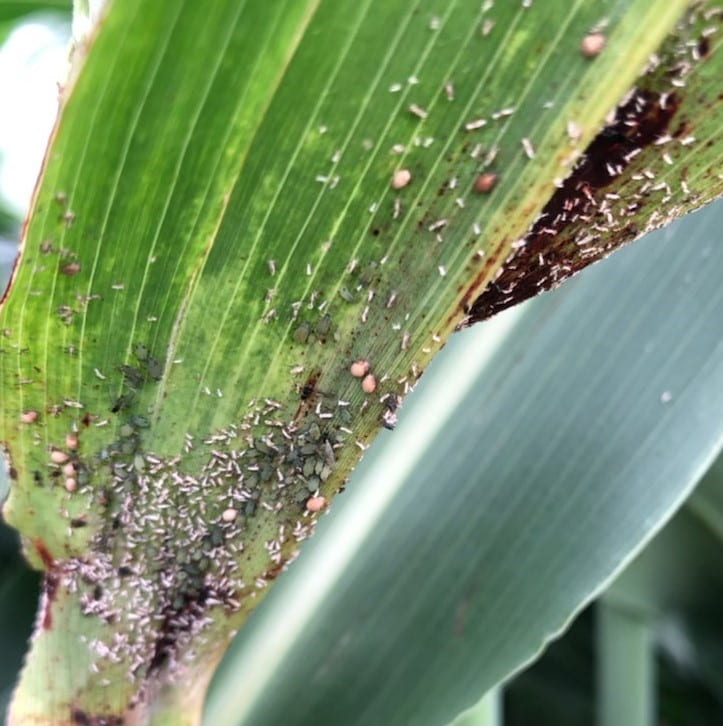–by Dr. Jeff Whitworth — Field Crops
Sorghum throughout north central and southcentral Kansas is still in many different stages of development. So far, sorghum pest problems have not been as readily apparent as in most past years–but there is probably still 2 months remaining to stay vigilant. Chinch bugs have not been as problematic as in past years, because either populations are down or we are learning how to better manage early season chinch bug problems.
Many corn earworms (see pic 1) are still feeding in corn and thus have yet to pupate, emerge as adults, and then start flying around after mating looking for oviposition sites in soybeans or sorghum. Sorghum is attractive to these “headworms” only between flowering and soft dough. Therefore, some sorghum fields may be past the susceptible stage. The moths will then usually head to soybeans to deposit eggs.

Picture 1: Corn earworm (pic provided by Cody Wyckoff)
The other problem we may have in sorghum in southcentral and north central Kansas are aphids. Corn leaf aphids have been in corn and sorghum in easily detected numbers since the whorl stage corn (mid-June) and are still relatively abundant in whorl stage sorghum (see pic 2) on 11 August. Corn leaf aphids rarely occur in densities to cause a negative impact on many plants. However, they do provide a good source of food for beneficials, i.e. please note the “mummies”(parasitized aphids) in the photo provided by Mr. Mills.

Picture 2: Corn leaf aphids (pic provided by Mr. Sean Mills, BASF)
This beneficial buildup may aid greatly toward controlling other aphid infestations like the one shown here (see pic 3) of sugarcane aphids which seem to be just starting to colonize sorghum in southcentral KS. from migratory adults just arriving from infested fields south of Kansas. Sugarcane aphids have been detected in several counties south of Hwy 50, so far, but not yet in densities approaching treatment thresholds. Hopefully, with healthy populations of beneficials these sugarcane aphids will be kept under treatment thresholds. As south winds continue, however, expect sugarcane aphids to continue to migrate into southern counties and then north throughout the state. Thus, monitoring and early detection are important.

Picture 3: Sugarcane aphids (pic provided by Mr. Jeff Seiler, Sg. Co.)